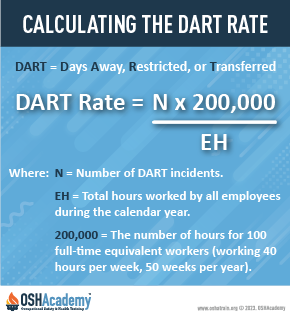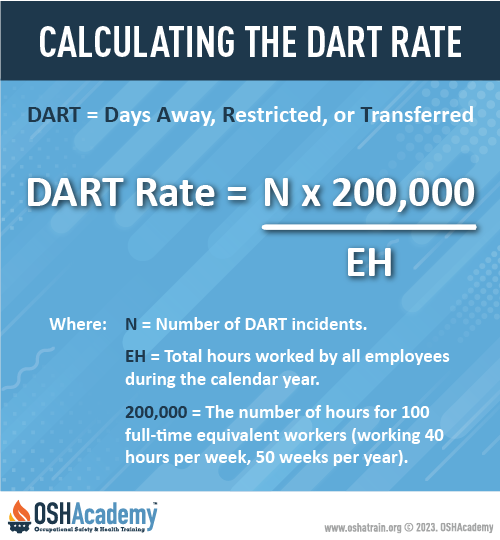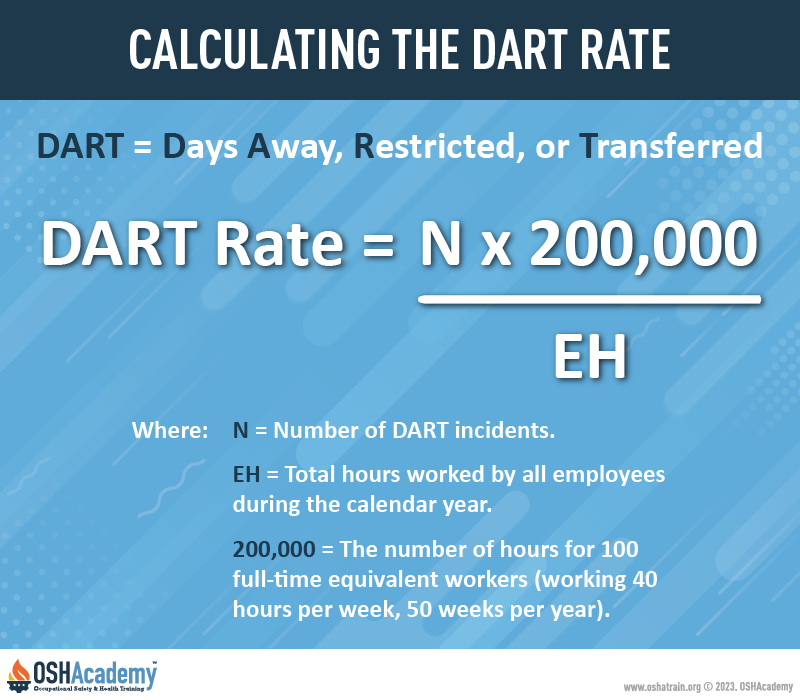Days Away, Restricted, or Job Transferred Rate (DART)
The DART Rate (Days Away, Restricted, or Job Transferred) is another common incident rate used in all industries. The DART Rate is the number of CASES with days away from work or job transfer or restrictions (cases on the OSHA 300 log with either column H or I checked) multiplied by 200,000 divided by total hours worked by all employees during the year covered. You can compute the DART Rate using the following formula:



For instance, if a contractor has had 10 DART incidents and 200 full-time employees who worked a total of 400,000 hours in 2018, the DART Rate would be:
On construction sites, the total number of hours worked by all employees will include your own employees, your temporary employees, and contractors directly supervised by you plus all contractor/subcontractor employees.
Knowledge Check Choose the best answer for the question.
2-5. Which of the following is a common incident rate used in all industries?
You forgot to answer the question!
